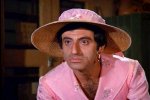Whoopysnorp
New member
Okay, I ponied up the dough for an MRL tape, and I was finally able to attempt some calibration on my Tascam ATR-60-8 last night. I didn't get very far, though...the manual prescribes the use of an oscilloscope and an AF level meter. I don't have either of those, but I do have a PC with Visual Analyzer 8 installed. I did manage to adjust the azimuth on the sync and repro heads to be in phase (or at least close) using the oscilloscope function of that software, but I'm having trouble adjusting my levels. The manual says that when I apply a +4 (0 VU) signal to each channel, I should be reading +4 on my AF level meter. I can successfully get a 0 VU signal to each channel by using a software tone generator, passing the signal into my Presonus Eureka, and making sure the output level of the Eureka is 0 VU. However, I'm at a loss as to what my levels should be reading on the PC (that's really all I have as a measurement tool). The sound card is an Audiophile 2496 whose input levels are fixed at whatever M-Audio calls 'Consumer'. The tape machine is putting out a +4 dB signal. With all of these variables, and me not really understanding dB scales, I have no idea what readings I should be shooting for. I did notice that if I took the trim pot as far over as it could go without sending it careening into clipping the input on my sound card, I was getting readings of -7.6 dB every time. Can anybody help?



